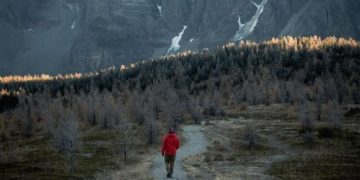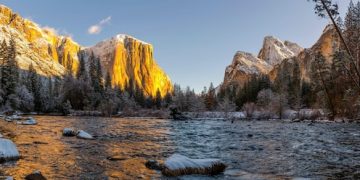US Travel Guide: Best Scenic Drives for 2025
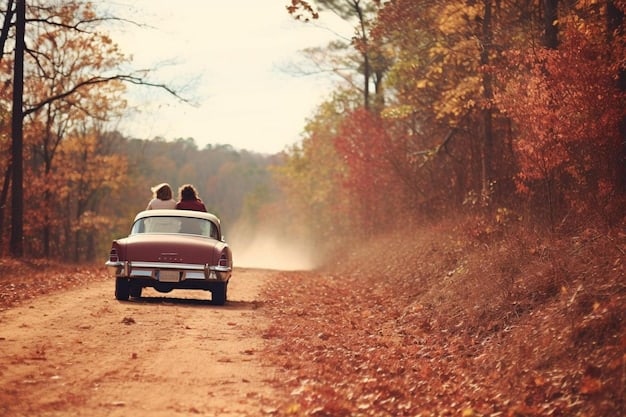
Embark on an unforgettable journey through America’s most breathtaking landscapes with the ultimate US Travel Guide: The Best Scenic Drives in the Country for 2025, offering unparalleled beauty and diverse experiences from coast to coast.
Ready to hit the open road? Planning a journey across the United States is more than just choosing a destination; it’s about the adventure itself. Our US Travel Guide: The Best Scenic Drives in the Country for 2025 highlights routes that promise not only stunning vistas but also rich cultural experiences and unforgettable memories.
The iconic pacific coast highway: california’s crown jewel
The Pacific Coast Highway, or Highway 1, is arguably one of the most famous and breathtaking drives in the world. Stretching along California’s rugged coastline, it offers unparalleled views of the Pacific Ocean, dramatic cliffs, and charming seaside towns. This legendary route is essential for any adventurer looking to experience the raw beauty of the Golden State.
Beginning just south of Orange County and extending north past Mendocino County, the PCH is a journey of discovery. Its allure lies not just in its scenic beauty but also in the diverse experiences it offers, from sprawling sandy beaches to towering redwood forests. Every turn reveals a new spectacle, making it incredibly popular for both domestic and international travelers.
highlights of the big sur stretch
The segment through Big Sur is often considered the most awe-inspiring part of the Pacific Coast Highway. Here, the Santa Lucia Mountains plunge dramatically into the Pacific, creating a landscape of unparalleled grandeur.
- Bixby bridge: An architectural marvel offering stunning ocean vistas, perfect for iconic photographs.
- Pfeiffer big sur state park: Home to towering redwoods and picturesque hiking trails.
- Mcway falls: A rare waterfall that cascades directly onto the beach, visible from an accessible viewpoint.
- Julia pfeiffer burns state park: Offers dramatic coastal views and access to the famous McWay Falls.
Driving this segment requires careful attention, as the road is winding and narrow in places, but the rewards are immeasurable. It’s a journey best taken slowly, allowing ample time for stops at pull-offs and viewpoints.
Further north, the PCH continues to charm with diverse landscapes. Passing through areas like Monterey and Carmel-by-the-Sea provides a blend of natural beauty with sophisticated towns. These cities offer vibrant culinary scenes, art galleries, and historical missions, adding cultural depth to the scenic drive.
The environmental consciousness along the PCH is also noteworthy. Many efforts are made to preserve its natural state, from protected wildlife reserves to sustainable tourism initiatives. This commitment ensures that the highway remains a pristine natural gem for generations to come, allowing future travelers to enjoy its splendor.
In essence, the Pacific Coast Highway is far more than a road; it’s an experience. It encapsulates the spirit of adventure and the raw beauty of California’s coastline, making it a must-do in any 2025 US travel guide focusing on scenic drives. Each mile traversed offers a new perspective, cementing its status as a timeless American classic.
blue ridge parkway: a journey through appalachian splendor
Stretching for 469 miles through the Appalachian Mountains of Virginia and North Carolina, the Blue Ridge Parkway is an engineering marvel designed purely for leisure driving. It connects the Shenandoah National Park to the Great Smoky Mountains National Park, offering continuous long-range vistas and close-up views of the rugged mountains and pastoral landscapes.
Unlike a traditional highway, the Parkway is intentionally free of commercial traffic and designed to be a slow-paced journey. Its speed limit is typically 45 mph or less, encouraging drivers to savor the scenery and pull over at numerous overlooks. This focus on panoramic views and natural beauty makes it an ideal destination for those seeking tranquility and natural immersion.
seasonal beauty and outdoor activities
The Parkway’s charm changes with the seasons, making it a perennial favorite. Spring brings lush green foliage and wildflowers, while summer offers vibrant greenery and comfortable temperatures for outdoor pursuits. Autumn, however, transforms the landscape into a riot of reds, oranges, and golds, drawing countless visitors.
- Fall foliage: The most popular time for visitors, offering spectacular colors.
- Hiking trails: Numerous access points to trails like Linville Gorge and Mount Pisgah.
- Waterfalls: Many cascades are accessible via short walks from overlooks.
- Picnic areas: Designated spots perfect for enjoying a meal amidst nature.
These seasonal transformations provide distinct experiences. Whether one prefers the quiet solitude of a spring morning or the bustling energy of fall, the Parkway accommodates diverse preferences. It’s also a mecca for outdoor enthusiasts, offering something for every level of activity.
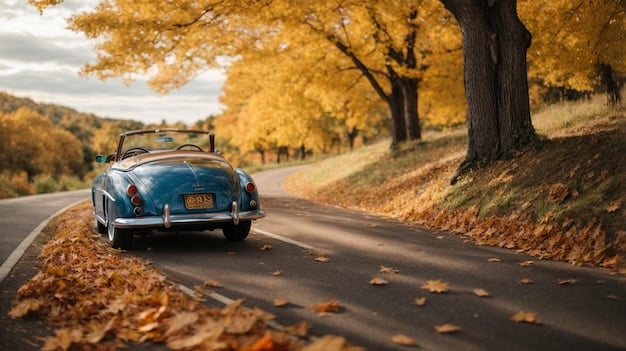
Beyond its natural allure, the Parkway also serves as a living museum of Appalachian culture. Historic farmsteads, mountain cabins, and craft centers dot the route, providing glimpses into the region’s heritage. The folk art and music traditions are palpable, often celebrated in local festivals and events.
Planning a trip along the Blue Ridge Parkway often involves looking at peak leaf season forecasts, which vary slightly each year based on weather patterns. Accommodation options range from rustic campgrounds within the national park system to charming bed-and-breakfasts in nearby towns like Asheville, North Carolina, or Roanoke, Virginia.
The Blue Ridge Parkway is more than just a drive; it’s a testament to natural preservation and a celebration of American heritage. Its carefully maintained beauty and myriad recreational opportunities make it an essential inclusion in any guide to the best US scenic drives.
overseas highway, florida: driving over the ocean
The Overseas Highway in Florida offers a uniquely aquatic driving experience across the Florida Keys. This incredible feat of engineering spans 113 miles, connecting the mainland to Key West through a series of bridges and islands. It provides an uninterrupted panorama of turquoise waters, making it feel as though you are driving directly on the ocean.
Originally built on the infrastructure of Henry Flagler’s Overseas Railroad, destroyed by the 1935 Labor Day hurricane, the highway symbolizes resilience and ingenuity. It now acts as a lifeline and a scenic wonder, leading travelers to the southernmost point of the continental United States. The journey itself becomes an integral part of the Key West adventure.
key stops and aquatic adventures
The drive is punctuated by colorful, laid-back islands, each with its own distinct character and charm. These “Keys” offer various activities that leverage their unique marine environment.
- Key largo: The “diving capital of the world,” home to john pennekamp coral reef state park.
- Islamorada: Known for world-class fishing and quaint art galleries.
- Marathon: Features the turtle hospital, a rescue facility for injured sea turtles.
- Seven mile bridge: An iconic long bridge providing stunning, unobstructed ocean views.
Beyond the primary stops, countless smaller islands and sandbars provide opportunities for spontaneous exploration. Many travelers bring kayaks or paddleboards to launch directly from accessible points along the route, exploring hidden coves and tranquil waters.
The ecosystem surrounding the Overseas Highway is incredibly rich and diverse, supporting vibrant coral reefs, mangrove forests, and an abundance of marine life. Efforts are continuously made to protect this delicate balance, ensuring that the natural beauty remains intact for future generations of visitors.
Upon reaching Key West, the journey culminates in a lively, historic town famous for its vibrant culture, stunning sunsets, and unique architecture. Duval Street, Mallory Square, and Ernest Hemingway’s home are just a few of the attractions that welcome visitors, making the drive and destination equally memorable.
The Overseas Highway is not just a road; it’s an invitation to experience a distinct blend of natural beauty, engineering marvel, and laid-back island life. It stands out in any 2025 US travel guide for scenic drives due to its unparalleled oceanic vistas and the unique culture it connects.
columbia river gorge scenic byway, oregon: waterfalls and volcanoes
The Columbia River Gorge Scenic Byway in Oregon offers a dynamic travel experience, showcasing a dramatic landscape carved by ancient floods and volcanic activity. This route runs parallel to Interstate 84 but provides a more intimate look at the region’s natural wonders, including numerous waterfalls, lush forests, and stunning river views.
As the first scenic highway in the United States designated as a National Historic Landmark, the Byway is rich in both natural and human history. It winds along the impressive Columbia River, which forms the border between Oregon and Washington. The unique geology of the gorge creates a microclimate that supports an incredible diversity of flora and fauna.
waterfall wonders and historic stops
The Byway is particularly famous for its impressive concentration of waterfalls, many of which are easily accessible. Each waterfall has its own unique character, some cascading delicately, others thundering powerfully.
- Multnomah falls: Oregon’s tallest waterfall, accessible by a short walk and offering a historic lodge.
- Horsetail falls: Named for its distinctive shape, located close to the road.
- Latourell falls: Features a stunning columnar basalt formation behind the falls.
- Wahkeena falls: Part of a beautiful loop trail connecting to other waterfalls.
Beyond the waterfalls, the Byway also offers numerous viewpoints and historic sites. The Vista House, perched atop a promontory, provides panoramic views of the gorge and the river, serving as an ideal spot for reflection and photography. Driving this route feels like stepping back in time to an era when roads were built for pleasure and scenery.
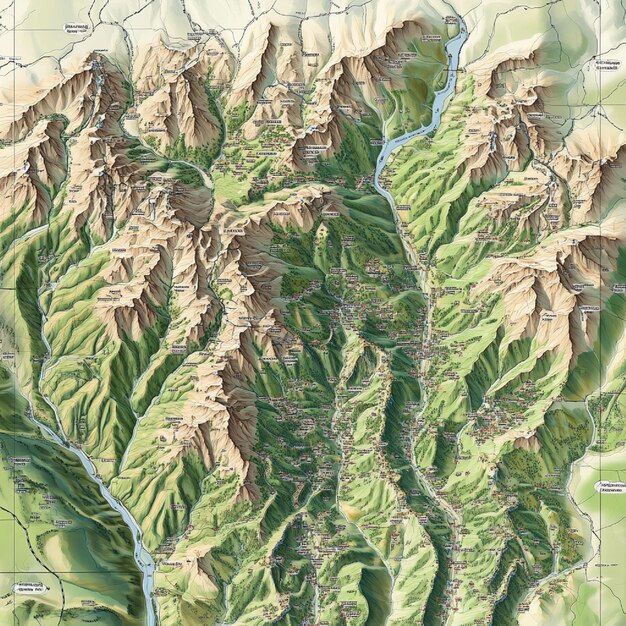
The cultural significance of the gorge is also profound, having been a critical passageway for Native American tribes and later, pioneers following the Oregon Trail. Interpretive signs along the Byway narrate these stories, providing context to the landscape’s historical importance.
In recent years, the region has faced challenges from wildfires, making it crucial for visitors to check local conditions and closures before embarking on their trip. Conservation efforts are ongoing to restore and protect this unique ecosystem, ensuring its long-term viability for both nature and tourism.
The Columbia River Gorge Scenic Byway provides a journey through a landscape of immense geological and historical significance, offering a blend of natural spectacle and cultural insight. Its abundance of waterfalls and unparalleled river views firmly place it among the best scenic drives in the US for 2025.
route 66: america’s mother road re-imagined
Route 66, known as “America’s Mother Road,” evokes a strong sense of nostalgia and wanderlust. While not a continuous, fully intact highway today, segments of the original route still beckon travelers seeking a classic American road trip experience. This historic route winds through eight states, from Chicago to Santa Monica, passing through diverse landscapes and countless quirky roadside attractions.
Established in 1926, Route 66 played a pivotal role in the migration patterns of Americans, particularly during the Dust Bowl era. It symbolized freedom, opportunity, and the open road. Though decommissioned in the 1980s, its spirit lives on, preserved and celebrated by communities along its corridor. Exploring its remaining sections offers a tangible connection to American history.
rediscovering classic Americana
Driving Route 66 today involves piecing together original segments with newer interstates, but the effort is rewarded with authentic experiences unique to this iconic path. Each state offers its own set of historic diners, vintage motels, and curious landmarks.
- Oklahoma: Home to many original stretches and the route 66 museum in clinton.
- Arizona: Features the grand canyon, petrified forest national park, and the historic town of seligman.
- New mexico: Known for its vibrant art scene and unique cultural blend in santa fe and albuquerque.
- Missouri: Offers classic diners and the historic “chain of rocks” bridge.
These specific attractions are emblematic of Route 66’s enduring appeal. Beyond the well-known landmarks, simply driving through small towns off the beaten path often reveals hidden gems and friendly faces, allowing for genuine interactions with local cultures.
The preservation efforts along Route 66 are largely driven by passionate local communities and enthusiast groups. They work tirelessly to maintain old neon signs, restore gas stations, and keep the spirit of the road alive. These efforts contribute significantly to the authentic experience travelers seek.
The re-imagined Route 66 journey is not just about the destinations; it’s about the journey itself and the discovery of a bygone era. It offers a unique blend of history, kitsch, and quintessential Americana, making it an extraordinary scenic and historic drive in any 2025 US travel guide.
going-to-the-sun road, montana: glacier’s alpine masterpiece
The Going-to-the-Sun Road in Glacier National Park, Montana, is a masterpiece of engineering and natural beauty. This 50-mile stretch of road winds through the heart of the park, traversing the Continental Divide at Logan Pass (6,646 feet) and offering unparalleled views of ancient glaciers, pristine valleys, and dramatic peaks. It’s often considered one of the most stunning mountain drives in North America.
Due to heavy snowfall, the road is only fully open during the summer months, typically from late June or early July until mid-October. This limited access makes the window of opportunity for experiencing it even more special. Timing a trip requires careful planning, often necessitating reservations to manage visitor traffic and protect the park’s fragile ecosystem.
breathtaking vistas and wildlife spotting
Every turn on the Going-to-the-Sun Road provides a new, expansive vista. The road often clings to cliffsides, offering dizzying views down into verdant valleys and across to snow-capped mountains. This elevated perspective provides an ideal vantage point for spotting wildlife in their natural habitat.
- Logan pass: The highest point, offering trailhead access and often visible mountain goats and bighorn sheep.
- Lake mcdonald: A stunning, large lake on the western side, known for its colorful pebbles and boat tours.
- St. mary lake: On the eastern side, offering equally spectacular views and reflective waters.
- Weeping wall: A section where water cascades directly onto the road, especially in early summer.
Beyond driving, numerous pull-offs and designated parking areas allow visitors to venture out on short hikes or simply absorb the grandeur of the landscape. Early mornings are often best for wildlife viewing and avoiding peak crowds, especially at popular spots like Logan Pass.
Conservation is paramount in Glacier National Park, which is why reservations for the Going-to-the-Sun Road have been implemented to manage visitor impact. These measures help protect the park’s pristine environment and ensure a quality experience for all. Respecting park rules and staying on marked trails contributes to these critical conservation efforts.
The experience of driving the Going-to-the-Sun Road is transformative, offering views that seem to defy imagination. It is a quintessential mountain driving experience that every scenic drive enthusiast should aspire to, solidifying its place in the best US scenic drives for 2025.
utah’s scenic byway 12: a journey through geological time
Utah’s Scenic Byway 12, also known as “A Journey Through Time Scenic Byway,” is a designated All-American Road that showcases an astounding diversity of geological formations and vibrant landscapes across some of Utah’s most iconic national parks and monuments. Stretching 123 miles, it connects Capitol Reef National Park to Bryce Canyon National Park, passing through Red Canyon and Kodachrome Basin State Park.
This byway is less about a specific destination and more about the incredible journey through millions of years of geological history. The landscape shifts dramatically from red rock canyons and natural arches to high alpine forests and ancient petrified dunes, offering a continuous visual feast. It’s truly a journey where the road itself is the attraction.
geological wonders and outdoor adventures
Every segment of Scenic Byway 12 presents a new natural marvel, inviting travelers to explore the unique ecosystems and geological features that define Southern Utah. The light and shadows play across the formations, changing their appearance throughout the day.
- Bryce canyon national park: Famous for its spire-shaped hoodoos and amphitheaters.
- Capitol reef national park: Features a 100-mile long warp in the earth’s crust, the waterpocket fold.
- Grand staircase-escalante national monument: A vast, rugged landscape with slot canyons and fossil beds.
- Red canyon: Often called “little bryce,” with vibrant red rock formations and pine forests.
The byway also provides access to numerous trailheads for hiking, mountain biking, and even horseback riding, allowing for deeper immersion into the striking natural environment. Small, charming towns like Escalante and Boulder offer amenities and a chance to experience local culture and hospitality.
Seasonal considerations are important for Byway 12. While generally accessible year-round, winter can bring snow to higher elevations, particularly around Boulder Mountain, potentially impacting travel. Spring and fall offer the most comfortable temperatures for extended outdoor activities and vibrant light for photography.
The geological narrative along Scenic Byway 12 is awe-inspiring. Signs along the route offer interpretive information, explaining the formation of the various rock layers and structures. This enhances the appreciation for the monumental forces that shaped this unique corner of America.
Utah’s Scenic Byway 12 is a testament to the raw, untamed beauty of the American Southwest. Its unparalleled geological diversity and access to world-class national parks make it an indispensable inclusion in any 2025 US travel guide focusing on the country’s best scenic drives.
| Key Drive | Brief Description |
|---|---|
| 🌊 + Pacific Coast Highway | California’s breathtaking coastal road with dramatic cliffs and ocean vistas. |
| ⛰️ + Blue Ridge Parkway | Appalachian mountain drive connecting two national parks perfect for fall foliage. |
| 🏝️ + Overseas Highway | Florida Keys drive over turquoise waters connecting islands to Key West. |
| 🏜️ + Utah’s Scenic Byway 12 | A geological journey through red rock canyons and national parks in Southern Utah. |
frequently asked questions
The “best” time highly depends on the specific drive. For fall foliage, September to October is ideal for the Blue Ridge Parkway. Coastal drives like Highway 1 are beautiful year-round, though summer and early fall offer milder weather. Mountain passes like Going-to-the-Sun Road are typically only fully open from late June to mid-October due to snow.
Most scenic drives in the US are accessible by standard passenger vehicles. However, some mountain roads might have restrictions for oversized vehicles or trailers, especially on very winding or steep sections. Always check specific road regulations and conditions, especially during adverse weather or seasonal closures.
While the actual driving time for many routes might be just a few hours, to truly experience a scenic drive, plan for at least a full day, if not multiple days. This allows ample time for frequent stops at overlooks, short hikes, exploration of charming towns, and simply savoring the environment without feeling rushed.
Some scenic roads, particularly those within national parks (like Going-to-the-Sun Road in Glacier NP), require an entrance fee for the park itself. Others, like the Blue Ridge Parkway or the Overseas Highway, are free to drive. Always check the official websites of the national parks or byways for current fee information and reservation requirements.
Pack essentials like water, snacks, a first-aid kit, and a paper map in case GPS signal is lost. Dress in layers, as mountain weather can change quickly. Don’t forget a camera, binoculars for wildlife viewing, and comfortable shoes if you plan to do any walking or hiking at stops along the route. Sunscreen and hats are also recommended.
conclusion
The United States, with its vast and varied landscapes, offers an unparalleled array of scenic drives, each promising a distinct adventure. From the rugged coastal beauty of California’s Pacific Coast Highway to the ancient geological wonders of Utah’s Scenic Byway 12, these routes are more than mere roads; they are invitations to explore, to connect with nature, and to create lasting memories. Whether seeking the vibrant colors of autumn, the tranquil expanse of the ocean, or the majesty of towering mountains, the 2025 landscape of US scenic drives presents an exciting canvas for every kind of traveler. Prepare your vehicle, pack your spirit of adventure, and embark on a journey that reveals the true grandeur of America.

